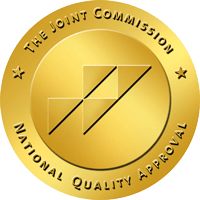Although painkiller abuse is a major problem in the United States, it’s not the only type. Doctors hand out millions of prescriptions for depressants and stimulants every year too. Because of that, many people abuse prescriptions with and without the intention of doing so. Spreading awareness about the signs of prescription drug abuse can save lives.
Signs of Prescription Drug Abuse
 It’s not always easy to pick out people who abuse prescription drugs. Most of the time, they find ways to hide it from their family members, friends, and even doctors. However, looking for specific behavioral changes and physical symptoms could help loved ones recognize the problem.
It’s not always easy to pick out people who abuse prescription drugs. Most of the time, they find ways to hide it from their family members, friends, and even doctors. However, looking for specific behavioral changes and physical symptoms could help loved ones recognize the problem.
Changes in Behavior
People’s behaviors are major indicators of a substance problem for loved ones to look for. They typically lie, avoid eye contact, skip regular activities such as work, and stop caring about their appearance. In most cases, those with substance use disorder become reckless, aggressive, irritable, and moody. Borrowing money, stealing, and hanging out with a different crowd are other signs.
Physical Symptoms
When people don’t exhibit the above behaviors, loved ones can look at physical symptoms instead. However, these signs differ depending on the type of prescription drugs that they abuse.
Unfortunately, chronic pain treatment from primary care doctors usually consists of an opioid prescription. Abusing these drugs makes the users very happy and relaxed.
However, opioids cause constricted pupils, low blood pressure, nausea, constipation, and vomiting. People who abuse them also experience respiratory depression, poor coordination, dry mouth and skin, dizziness, weakness, and sleepiness. Bruises can appear on the arms of those who inject these drugs too.
Also called sedatives or tranquilizers, depressants are drugs that treat anxiety, panic attacks, and sleep disorders. They create a sense of intense happiness, excitement, and well-being in people who abuse them. However, they can cause poor concentration, impaired judgment, memory problems, slow reflexes, slurred speech, and poor coordination. Low blood pressure and respiratory depression can occur as well.
Doctors use stimulants to treat Attention Deficit Hyperactivity Disorder (ADHD), narcolepsy, and obesity. Since they make the brain move faster, they increase alertness and energy and improve mood and attention. However, stimulants also cause loss of appetite, memory problems, anxiety, dilated pupils, sweating, paranoia, and shaking. The signs of prescription drug abuse also include mood swings, delusions, and increased heart rate, body temperature, and blood pressure.
Find Help for Substance Abuse
When you want to help a loved one overcome prescription drug abuse, Pillars Recovery can help. Our addiction treatment facility can provide gender-specific care for young adults. From residential rehab to transitional living, our range of services includes:
- Dual diagnosis treatment
- Marriage and family counseling
- One-on-one and group therapy
- Recreational therapy
- Massage and acupuncture
Take the first step in helping a loved one stop prescription or painkiller abuse. Ask us for more information about the signs of prescription drug abuse. Call 866-789-1652 so that one of our friendly staff members can assist you.






